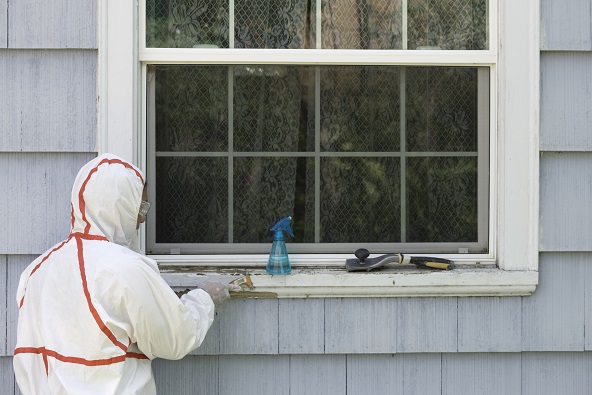If you’re thinking about renovating or repainting an older home where lead-based paint may be present, it is important to understand the risks involved and how to protect yourself and your family. While consumer paint has been lead-free for decades, any house or structure built before 1978 may still have older, lead-based paint. If it is not peeling or chipping, it is not considered hazardous.
However, if you are undertaking a remodeling project, it can disturb the surface and produce lead dust. For this reason, the Environmental Protection Agency developed a set of lead-safe work practices for anyone about to start work that disrupts surfaces in buildings constructed prior to 1978. Following these guidelines will help you keep lead dust to a minimum and clean up your work area properly.
Disclosure of Information Regarding pre-1978 Housing.
Because lead from paint, dust, and chips can have serious health consequences if not taken care of properly, federal law now mandates that anyone buying, renting, or renovating housing older than 1978 receive certain information. Sellers, for instance, have to tell prospective buyers about any possible lead-based paint hazards before selling a house. Indeed, sales contracts must include a disclosure form regarding lead-based paint.
Landlords must disclose any information pertaining to lead-based paint before executing a lease. In fact, leases must also include a disclosure form about lead-based paint. And home remodelers have to give you the EPA’s brochure about lead before any work commences.
Finding Lead Hazards in Your Home
As long as lead-based paint remains in good condition or is not on a friction surface like a window, it is not a threat to your health. When this type of paint is damaged, cracked, or peeling, however, it becomes dangerous and should be remediated. In addition, lead-based paint can be a problem if it is on surfaces that children might chew or that receive lots of wear and tear like windowsills, door frames, and banisters.
The only real way to find out if lead hazards are present in your home is to test for them. At this point, you should hire a trained professional to perform a lead inspection.
Health Effects of Lead Exposure
Lead-based paint must be contained because it can cause serious health problems. Indeed, children are more at risk than adults because their bodies absorb more lead. Also, their brains and nervous systems are more susceptible to its harmful effects. In addition, babies and young children often put their hands and other objects that may contain lead dust in their mouths.
Adults, on the other hand, can also suffer from lead-based paint exposure. It can cause reproductive problems in both sexes in addition to high blood pressure, nervous system disorders, and muscle and joint pain. Women may also experience difficulties during pregnancy due to lead exposure.
How to Eliminate or Reduce Lead Hazards in the Home
There are a number of steps you can take right away to cut down on lead exposure in your home. To begin with, you should clean up any paint chips. Furthermore, you should also clean floors, windowsills, window frames and other surfaces regularly. You definitely want to keep all play areas especially clean.
Some temporary fixes for controlling lead hazards involve repairing damaged painted surfaces and planting grass to cover soil with elevated lead levels. Covering a surface with regular paint is not a long-term solution. For more permanent solutions, you need to consult a certified lead abatement contractor who is qualified to remove or seal lead-based paint with special materials. Certified workers will follow appropriate state and federal safety standards. After the work is finished, dust cleanup must be repeated until testing indicates that lead dust levels are below EPA standards.
Before you or your home contractor begin renovations that will disturb painted surfaces, you need to test the area for lead-based paint. You should also avoid using tools like belt sanders, heat guns, or propane torches to remove paint. Not only do these actions generate lead dust and fumes, but the dust could stick around long after the work is finished.
And make sure you move your family to another location until the work and the cleanup is complete. If moving your family outside the home isn’t feasible, you need to seal off the work area completely to prevent any dust, and asbestos from coming in.
By following these guidelines and consulting the right professionals, you will be able to handle lead-based paint safely during any home renovations.




